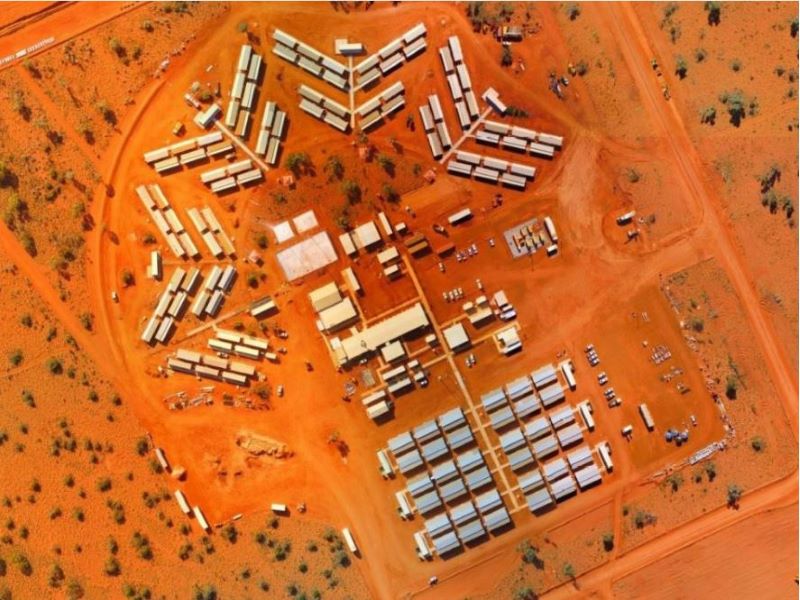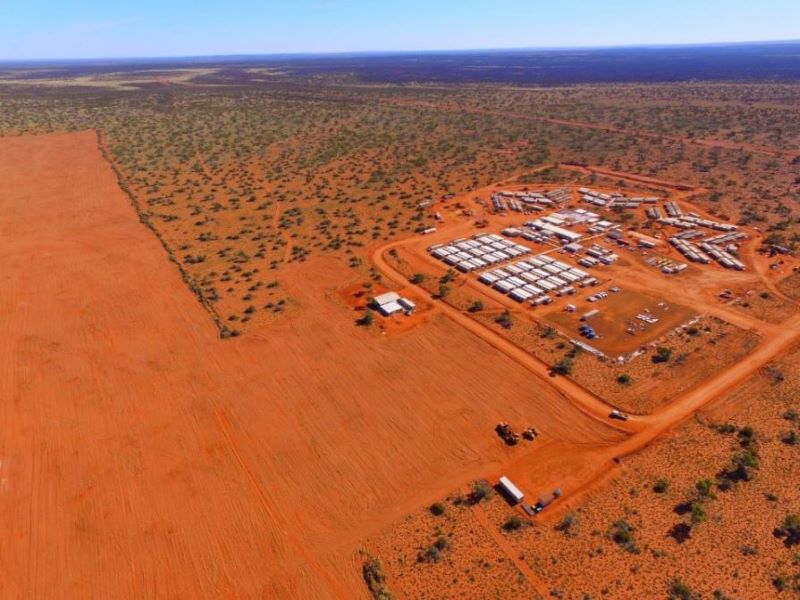The Gruyere gold project is located on mining lease M38/1267, approximately 200km east of Laverton in Western Australia.
With an estimated mine life of more than 11 years, the project is claimed to be one of the most significant undeveloped gold deposits in Australia.
The project was previously wholly owned by Gold Road Resources (Gold Road), which entered a 50:50 joint venture (JV) with an Australian subsidiary of Gold Fields in November 2016, for the development and operation of the project.
According to the transaction, which was completed in January 2017, Gold Fields acquired a 50% interest in the Gruyere gold project for a A$350m ($268.42m) cash consideration and the remaining during the construction phase.
The pre-feasibility study (PFS) of the gold project was completed in February 2016, followed by the commencement of the feasibility study (FS), which was completed in October 2016. Construction activities began at the mine in the second half of 2017, while mining commenced in November 2018. First gold from the mine was delivered in the second quarter (Q2) of 2019. The total mined production until December 2020 was 14.8Mt.
The project is estimated to cost A$507m ($370m) and produce 300,000oz of gold a year.
Studies completed at the mine site also indicated the potential for underground mine development. The 2021 exploration campaign will also focus on drilling below the open-pit resource to assess the potential for transitioning to future underground operations at the mine.
Geology and mineralisation of the Gruyere deposit
Located in the Yamarna Greenstone Belt, the Gruyere deposit comprises a porphyry intrusive dyke, which strikes over a length of 2,200m. A combination of intermediate to mafic volcaniclastic rocks and a tholeiitic basalt unit occur at the east and west sides of the deposit.
Mineralisation at the deposit is associated with albite-sericite-chlorite-pyrite alteration, which changed the primary texture of the rock composed of fine quartz-carbonate veins. The primary sulphide mineral is pyrite with some visible gold found in logged diamond drill core.
Gruyere gold project reserves
The proven and probable mineral reserves at the Gruyere open-pit project were estimated at 79.78 million tonnes (Mt), with contained gold of 3.17Moz grading 1.24g/t Au, as of December 2020.
The total open-pit resources (measured, indicated, and inferred) were estimated at 135.54Mt, containing 5.73Moz of gold, graded at 1.31g/t Au.
Gold Road evaluated and announced a 50% attributable underground resource (inferred) of 18.47Mt, with contained gold of 0.87Moz in February 2021.
Mining and processing at the Gruyere gold mine
The Gruyere gold project uses open-pit mining to mine the deposit using conventional mining equipment. Loading and hauling are done using 360t excavators and 180t haul trucks, respectively. The loading fleet comprises three 360t hydraulic excavators while the ore and waste haulage fleet consists of 180t mechanical drive haul trucks.
Processing at the mine is performed by a single-stage primary crush, semi-autogenous grinding and ball milling with pebble crushing (SABC) circuit. It also includes a conventional gravity and carbon-in-leach (CIL) process.
The processing facility has a design capacity to process 7.5 million tonnes per annum (Mtpa) of fresh ore, 8.0Mtpa of transitional ore, and up to 8.8Mtpa of oxide ore.
Infrastructure of the Gruyere gold project
The project site can be accessed from Laverton along the Great Central Road. A gas-fired power station was developed to power the mine operations. With a design capacity of 45MW, the power station is capable of producing the peak load requirement of the plant. The construction and commissioning of the 45MW Gruyere powerhouse were completed by Clark Energy on behalf of APA Group in November 2018.
Water for the plant operation is sourced from the Yeo Borefield located approximately 25km west of the project site. The borefield supplies 7.5GL of moderate to high-saline water a year for processing needs.
An accommodation village with 300 permanent and 300 temporary accommodation rooms was constructed roughly 6km from the project site. It also has support service buildings, including administration and mess facilities.
Adjacent to the village, an airstrip with a 2.1km-long runway, terminal and fuel facility was constructed. It can handle 100-seat aircraft.
A tailings storage facility (TSF) with a surrounding waste dump was built to the east of the open pit. The waste generated is dumped into the TSF using traditional dump construction techniques.
Contractors involved
The technical report for the Gruyere gold project was compiled by Behre Dolbear Australia (BDA). The feasibility study involved several consultants, including GR Engineering Services (GRES), AMC Consultants, Pennington Scott, Dempers and Seymour, and MBS Environmental (MBS).
Gold Road awarded the engineering, procurement, and construction contract to the Amec Foster Wheeler-Civmec joint venture.
Scope Australia was selected to provide detailed design and engineering services for construction and permanent village near the project site. Australian mining services provider MACA Civil received the bulk earthworks contract for the project.
Downer EDI was awarded a five-year mining services contract in 2018. APA Group received the contract to design, build, own, and operate the 198km-long pipeline and the 45MW power station. It will recover the investment through a gas transportation and electricity supply agreement.
Gold Road engaged AMC Consultants and Orelogy to conduct conceptual underground studies for the project in 2015 and 2019, respectively. The studies formed the basis for the maiden underground mineral resource estimate in February 2021.
McNally Group installed the rooms at the accommodation camp. Australian company Compass Group is responsible for the management of the accommodation facility.





